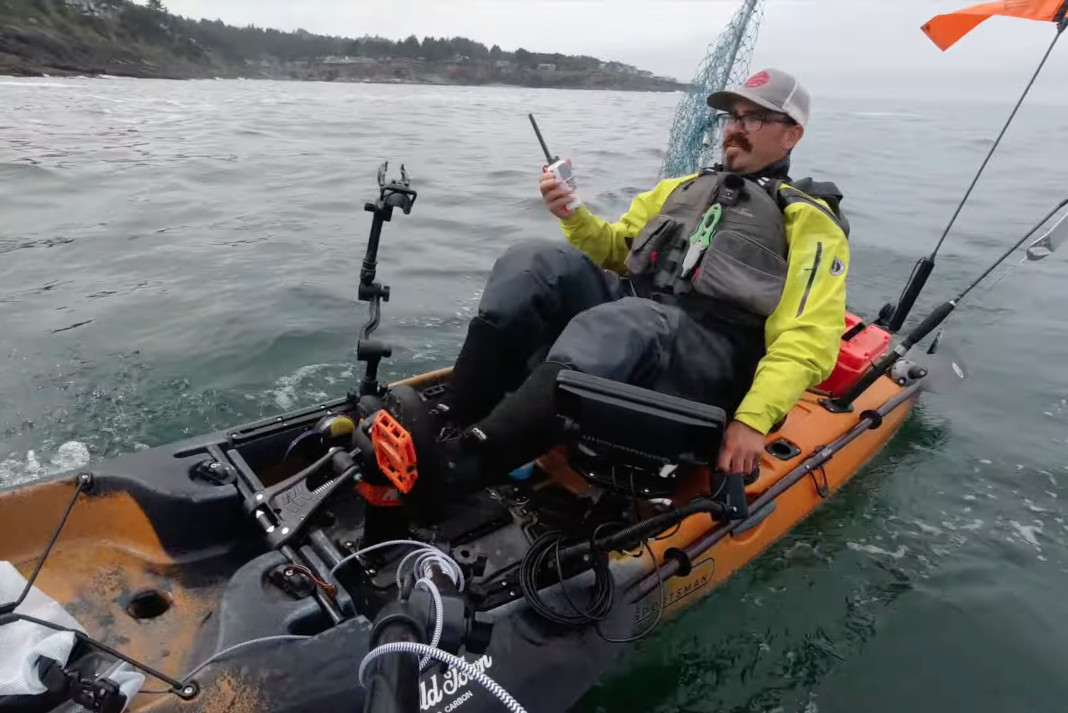Products You May Like
There may be no greater sense of adventure as a kayak angler as when you leave the mainland behind and head out to sea. But the ocean is an environment to be respected, and with that respect is ensuring you have all the equipment for a safe outing. Tyler Hicks knows just how wild the ocean can be. After all, the Oregon Coast is one of his local fishing spots. In this video, Hicks overviews his essential gear for offshore kayaking safety.
Gear Checklist For Offshore Paddling Safety
Hicks is pedaling out in his Old Town Salty from a unique harbor on the Oregon Coast.
Depoe Bay is often called the “world’s smallest harbor.” Being the passage to the ocean is a 50-wide rock inlet, Hicks almost immediately implements a vital device for ocean safety, his VHF radio attached to always essential PFD. He calls on channel 16 to inform boat traffic of his travel.
Hicks goes on to explain several pieces of equipment while trolling for salmon. This includes the Mustang Survival drysuit he is wearing for cold water conditions and visibility devices such as flags, lights, and bright apparel or kayak. Paddlers should also carry noise-making devices such as a horn, a bilge pump to empty their boat should it take on water or capsize, a repair kit, and in today’s age, keeping your cell phone handy.
Skills And Knowledge Beyond The Gear
Having the gear essential to offshore kayak safety is one step, but understanding specific skills and ocean conditions is equally important.
One of the first skills Hicks mentions is the ability to self-rescue, understanding the always present chance of capsizing. Knowing how to properly use the communication devices such as the VHF you are carrying is another. When it comes to knowledge, Hicks stresses the need for paddlers to have a grasp of the weather and marine conditions they will encounter.
“One of the most important things when reading offshore forecasts is understanding swell. And that includes swell height and time, or period,” Hicks explains. “Period is basically the amount of time it takes from one wave to pass one point until the next wave passes that same point. The longer the period is, the more that the waves are stretched out.”
Hicks goes on to add, “Then there is wave height. I have a general rule that is, you want your period to be at least twice that of your swell height to make it comfortable to be out here on the ocean.”
Beyond the direct knowledge of kayaking offshore, another vital and sometimes overlooked task is producing a float plan.
“When going out on the ocean, always file a float plan. File a float plan with a loved one or someone you trust. In that float plan, file details like where you’re launching, when you’re launching, a description of your kayak, a description of your launch vehicle, and your anticipated fishing location. Put those details in there, so they know where you’re going, and if you don’t show up on time, they have an area they can start searching and work back towards the launch.”
For more details and a complete list, check out Tyler Hicks’s offshore safety checklist.
